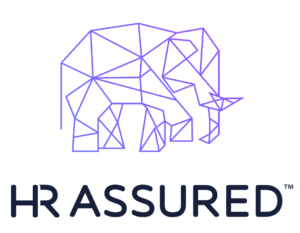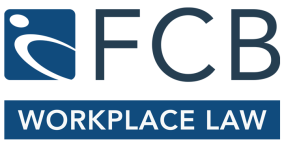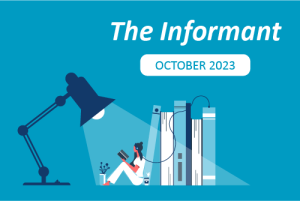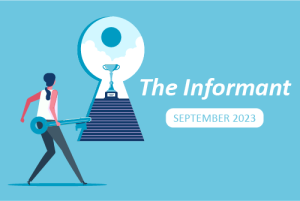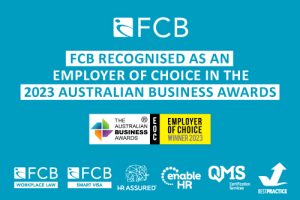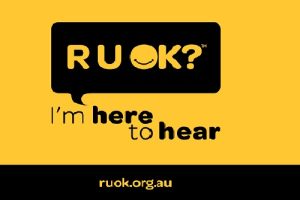Being Mean Won’t Keep Them Keen: The Role of Psychological Safety in High-Performing Workplaces
February 27, 2019Bianca Seeto, Partner and Solicitor of FCB Workplace Law and FCB’s Happiness Conductor, explores the benefits of psychologically safe workplaces and outlines some of the legal consequences for getting it wrong.
I’ve always been a fan of the art of gentle persuasion, but now research shows that if we want to get the best from our employees, we need to ensure they feel safe. The old “Treat them mean, keep them keen” attitude doesn’t work in personal relationships (ask Matthew Hussey), nor does it work if you want a workplace brimming with long term growth and sustainability.
But what does it mean to ‘feel safe’? Physical safety is easily understood, but just as important is for workers to feel safe to ask questions, be curious, and express an opinion.
What is psychological safety?
Amy Edmondson, a Harvard Business School professor, defines psychological safety “as a team climate characterised by interpersonal trust and mutual respect, in which people can learn and become their full contributing selves”.
We’re taught from a young age that there’s no such thing as a stupid question, yet so many of us hesitate to ask that burning query in a group environment, especially at work. This is because admitting to others that you might not know the answer makes many people feel vulnerable and exposed to potential ridicule from colleagues or management. So, what happens if this inhibition is removed and employees feel safe to raise their hand?
The Google Experience
Google ran a project named “Aristotle” – a tribute to Aristotle’s quote, “the whole is greater than the sum of its parts”. The question Google wanted to answer was: what makes a team effective at their business?
The answer for Google was (and is) psychological safety. It turns out to be the key ingredient to high-performing teams. The ability for team members to feel safe to take risks and be vulnerable in front of each other was more important than dependability, structure and clarity, meaning and impact. Psychological safety is achieved when an employee thinks there won’t be negative consequences for taking an interpersonal risk. This is important, because it means that employees who are part of a psychologically safe team feel confident that no-one on the team will embarrass, or punish, anyone else for admitting a mistake, asking a question, or offering a new idea.
Google Engineer, Sean Laurent sums it up best…
“What Project Aristotle has taught people within Google is that no one wants to put on a ‘work face’ when they get to the office. No one wants to leave part of their personality and inner life at home. But to be fully present at work, to feel ‘psychologically safe’, we must know that we can be free enough, sometimes, to share the things that scare us without fear of recriminations. We must be able to talk about what is messy or sad, to have hard conversations with colleagues who are driving us crazy. We want to know that work is more than just labour.”
Psychological safety in a workplace is important because it encourages diverse or divergent thinking which, in turn, supports high levels of creativity and innovation. A psychologically safe workplace minimises risk – it means that potential problems can be uncovered and discussed early, and people learn from their mistakes quickly with a focus on solutions and future learning.
But what if we get it wrong?
I’ve outlined the strong case for fostering psychological safety in teams, but what happens if a team gets it wrong? What happens if people feel psychologically unsafe at work?
According to a recent 2018 survey of employees, 1 in 5 employees are currently experiencing a mental health condition, with those aged 18-24 years being the most represented group. The top two mental health issues which the surveyed employees experienced at work are bullying and job insecurity.
According to SafeWork Australia, although only making up a small proportion of claims, the median time lost, and median direct costs associated with claims for mental stress are significantly higher compared to all other workers’ compensation claims. According to SafeWork Australia data, mental stress claims for 2014 to 2015 resulted in claimants having a median of 10 working weeks off work. This increases to a median of 10.4 weeks of lost working time for the sub-category of work-related harassment and workplace bullying. Compare this to the median lost time for all accepted claims, which is only 0.8 of a week. The median direct cost of a mental stress claim is $20,955 and $27,153 for the sub-category of workplace related harassment and/or workplace bullying, while the median direct cost per claim for all accepted claims was just $2,598.
Safe Work Australia defines “psychosocial hazards” as anything in the design or management of work that increases the risk of work-related stress including, but not limited to:
- Poor support
- High and low job demands
- Lack of communication
- Poor organisational change
- Poor organisational justice
- Remote and isolated work
- Poor workplace relationships
- Low role clarity
- Poor environmental conditions
- Violent and traumatic events.
So how do we make our workplaces psychologically safer?
Amy Towers, culture and engagement expert and director of the Risk Collective, says it’s essential for businesses to identify, and then adequately manage, psychosocial hazards, to avoid breaching their duty of care. We asked Amy for her key tips to minimise these hazards in the workplace.
TOP TIPS
1. Identify psychological risk factors in your workplace
To understand the risks, you first need to identify those situations and factors that have the potential to cause harm to the psychological health and safety of your workers and others in the workplace. There are a number of ways that you can gather this information including:
- Reviewing previous incident reports and investigations. This is often a good starting point for those not sure how to get the process underway;
- Consult with those that know the workplace best – your workforce. Encourage your workers to share their experiences and draw on their knowledge and ideas
- Awareness – consultation with the workforce also helps raise the awareness of psychological health and safety in the workplace
- Audit – businesses often carry out audits to identify the physical health and safety risks, but don’t think to do the same for psychological risks. Developing and implementing an audit program to identify psychological health and safety risks is an effective approach.
2. Establish commitment
If the leadership team in the business is not committed to cultivating a psychologically healthy workplace, then a successful approach to managing psychological risks is
unlikely. The Creating Mentally Healthy Workplaces report by The Mentally Healthy Workplace Alliance, identifies the following areas as key to ensuring a psychologically safe workplace:
- Provide training programs for leaders and supervisors, including mental health education
- Ensure senior staff are engaged in mental health promotion to ensure a safe and positive climate
- Develop, implement and monitor a mental/psychological health policy including zero tolerance of bullying and discrimination
- Ensure change is managed in an inclusive manner with open and realistic communication.
3. Engage the workforce when managing the risks
Once you have a good understanding of your psychosocial risk profile, and commitment from senior management, it’s imperative that you continue to engage with the workforce and draw on their experience, knowledge and ideas when formulating programs and actions targeting psychological risks. Consultation on psychological health and safety matters involves sharing information on hazards and risks, giving workers a reasonable opportunity to express their views, raise issues, contribute to the decision-making process, and taking those views into account.
4. Intervene Early & Provide Support
Often psychological injury can be avoided or significantly reduced through early intervention. Providing managers, supervisors and workers with awareness and education on psychological risk factors, and the signs and symptoms of work-related stress, can assist in early intervention.
Establishing and implementing company policies and processes can assist with the early identification and management of psychological risk factors. An example of an early intervention is implementing a peer support program internally, supported by an external support program, such as an Employee Assistance Program (EAP).
Compliance should not be the only driver for ensuring the psychological health and safety of your workforce. Committing to building and investing in a psychologically safe workplace can increase collaboration and productivity, and reduce absenteeism, presenteeism, workers’ compensation claims and litigation.
Need Support?
FCB Workplace Law have partnered with the Risk Collective to run intensive workshops on helping businesses navigate workplace laws to create mentally healthy workplaces. In-house workshops can also be tailored to your business.
For more information on these workshops, or advice in creating a psychologically safe workplace, please contact Bianca Seeto.
